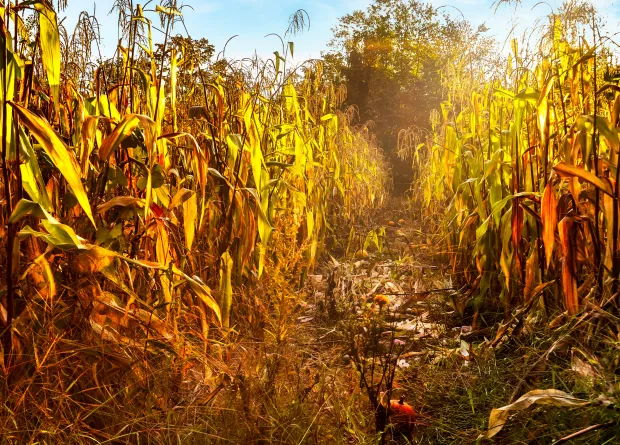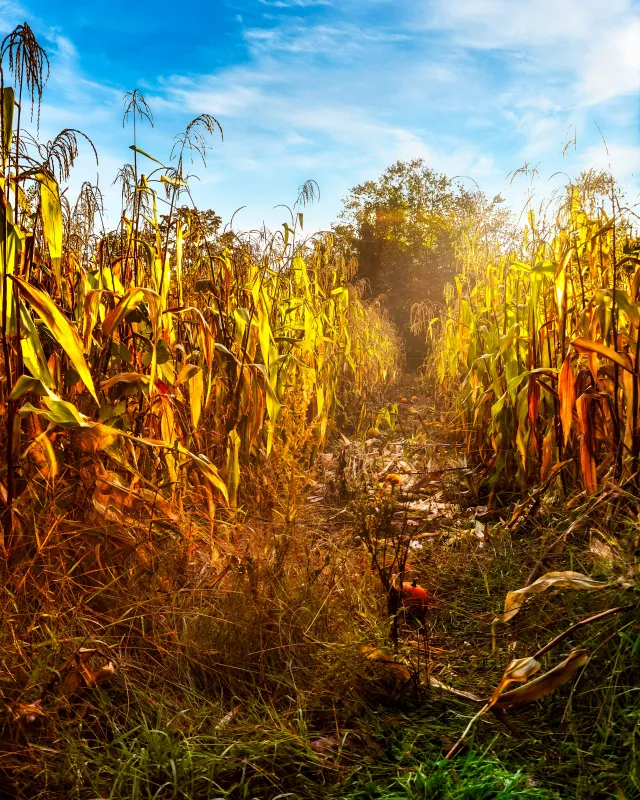Koanbanchinemma (do you see the light (in me))
Koanbanchinemma (do you see the light (in me)) is a new exhibit opening in Lyman Plant House on November 20, 2025. The exhibit features six Nipmuc artists, cultural and land stewards: Rachel Healing Willow Bayliss (Natick Nipmuc), Willow Daly and Keely Curliss (of Pequoig Farm), Scott Strong Hawk Foster, Andre StrongBearHeart Gaines, Jr., and Kimberly Toney. Toney, who is the Coordinating Curator for Native American and Indigenous Collections at Brown University, is co-curator of this exhibit in partnership with the Botanic Garden of Smith College and with the support of the Smith College Office of the Arts.

About the Exhibit:
The land upon which Smith College and its Botanic Garden stand holds profound historical and cultural significance for a number of sovereign Indigenous nations, particularly the Nipmuc. Long before the establishment of the Botanic Garden, Indigenous peoples of the Kwinitekw (Connecticut River) Valley have been active stewards of this land, engaging in complex systems of care, cultivation, and relationship with the environment.
This exhibition draws attention to the deep, enduring connection between Indigenous peoples and the land, a relationship that has shaped these landscapes for millennia. When the sun rises over this valley’s freshwater places, it illuminates more than just the land—it awakens life and nourishes cycles of life and regeneration—illuminating the beaver lodges, nurturing the first fiddlehead ferns of the season, and sustaining the corn that feeds in the Fall. It stirs the birdsong and the hum of insects. It can also stir something in us—a rekindling of our senses, our memories, and our responsibilities. If we are open to its light, it can awaken our spirits and remind us of our enduring, embodied connection to the natural world—and of our duty to care for it.
At its core, this exhibition calls for a heightened awareness of the ways in which Indigenous knowledge systems can awaken our senses, our understanding, and our collective responsibility to care for the natural world. Through the contributions of Nipmuc artists and cultural practitioners, this work foregrounds Indigenous methodologies, challenging dominant narratives of environmental stewardship and knowledge production.
By engaging with this exhibition, viewers are invited to critically reflect on the ways in which knowledge is both a product of and a guide for our relationship with the land. We are encouraged to recognize our role within an interconnected web of human and more-than-human relatives, all sustained by the same ecological forces. Through this lens, we are reminded that our understanding of nature—and our responsibility to it—must be constantly evolving, shaped by both the wisdom of the past and the challenges of the present.

Koanbanchinemma (do you see the light (in me)) is a new exhibit opening in Lyman Plant House on November 20, 2025. The exhibit features six Nipmuc artists, cultural and land stewards: Rachel Healing Willow Bayliss (Natick Nipmuc), Willow Daly and Keely Curliss (of Pequoig Farm), Scott Strong Hawk Foster, Andre StrongBearHeart Gaines, Jr., and Kimberly Toney. Toney, who is the Coordinating Curator for Native American and Indigenous Collections at Brown University, is co-curator of this exhibit in partnership with the Botanic Garden of Smith College and with the support of the Smith College Office of the Arts.
As Toney has written in the exhibit text:
The land upon which Smith College and its Botanic Garden stand holds profound historical and cultural significance for a number of sovereign Indigenous nations, particularly the Nipmuc. Long before the establishment of the Botanic Garden, Indigenous peoples of the Kwinitekw (Connecticut River) Valley have been active stewards of this land, engaging in complex systems of care, cultivation, and relationship with the environment.
This exhibition draws attention to the deep, enduring connection between Indigenous peoples and the land, a relationship that has shaped these landscapes for millennia. When the sun rises over this valley’s freshwater places, it illuminates more than just the land—it awakens life and nourishes cycles of life and regeneration—illuminating the beaver lodges, nurturing the first fiddlehead ferns of the season, and sustaining the corn that feeds in the Fall. It stirs the birdsong and the hum of insects. It can also stir something in us—a rekindling of our senses, our memories, and our responsibilities. If we are open to its light, it can awaken our spirits and remind us of our enduring, embodied connection to the natural world—and of our duty to care for it.
At its core, this exhibition calls for a heightened awareness of the ways in which Indigenous knowledge systems can awaken our senses, our understanding, and our collective responsibility to care for the natural world. Through the contributions of Nipmuc artists and cultural practitioners, this work foregrounds Indigenous methodologies, challenging dominant narratives of environmental stewardship and knowledge production.
By engaging with this exhibition, viewers are invited to critically reflect on the ways in which knowledge is both a product of and a guide for our relationship with the land. We are encouraged to recognize our role within an interconnected web of human and more-than-human relatives, all sustained by the same ecological forces. Through this lens, we are reminded that our understanding of nature—and our responsibility to it—must be constantly evolving, shaped by both the wisdom of the past and the challenges of the present.
There will be an opening reception on Thursday, November 20 from 4:30-6:30 pm open to all. Please check back in the coming weeks for more information on the participating artists here.